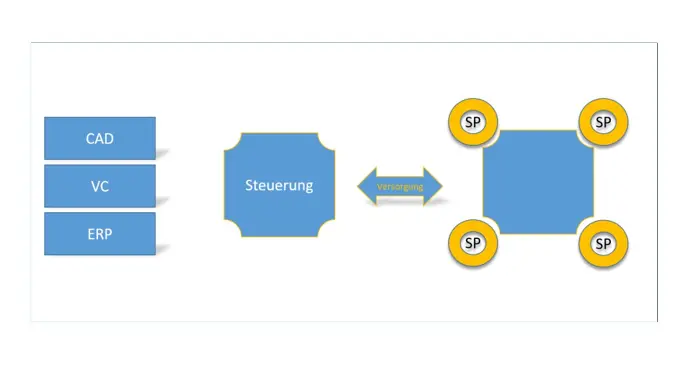The beginning of strategic master data management (MDM) seems to be the most challenging. Topic:
The Creation of Master Data Quality in
Industry & Logistics
Master data does not only emerge when the item reaches logistics.
In manufacturing companies, it begins in development/design. In a rough initial classification, we refer to "catalog parts" and "drawing parts," later on to assemblies whose production is outsourced, but whose individual parts are still significant for service.
When using "catalog parts," digital product data from manufacturers/supplier catalogs assist in the automated creation of master item records in the ERP system. Particularly in a well-maintained characteristic list of the BME-Cat format, the required data is integrated.
What is it good for?
Characteristic lists can be directly transported into the item master data of the ERP system during the final selection of the specific catalog part in the bill of materials for development/design. The question is, have you already implemented this level of digitalization?
The experts among you will now report that the completeness and quality of the characteristics to be filled in these electronic catalogs are not always up to par, which is true. However, there are also high-quality catalog platforms on the market that collect all data for the same item from various electronic catalogs beforehand and have the missing information supplemented by the manufacturer/supplier of the item. That makes all the difference.
How well is your catalog platform/your master data structured?
For drawing parts, developers/designers are responsible for providing the master data along with their developments. This data is urgently needed at least twice: once in the STEP file for the manufacturer for the digital processing of production planning, and then in the in-house process chain of intralogistics, manufacturing, shipping, etc., when the finished item or assembly is delivered.
Spare parts for the maintenance of the in-house machinery also have the same requirements. So, what will the item data of the spare parts lists look like when purchasing a new machine in the future?
And then there are of course gray areas. Their data is undoubtedly needed to finalize top-notch master data quality, but their creation and representation are not entirely automatable, and who is responsible?
